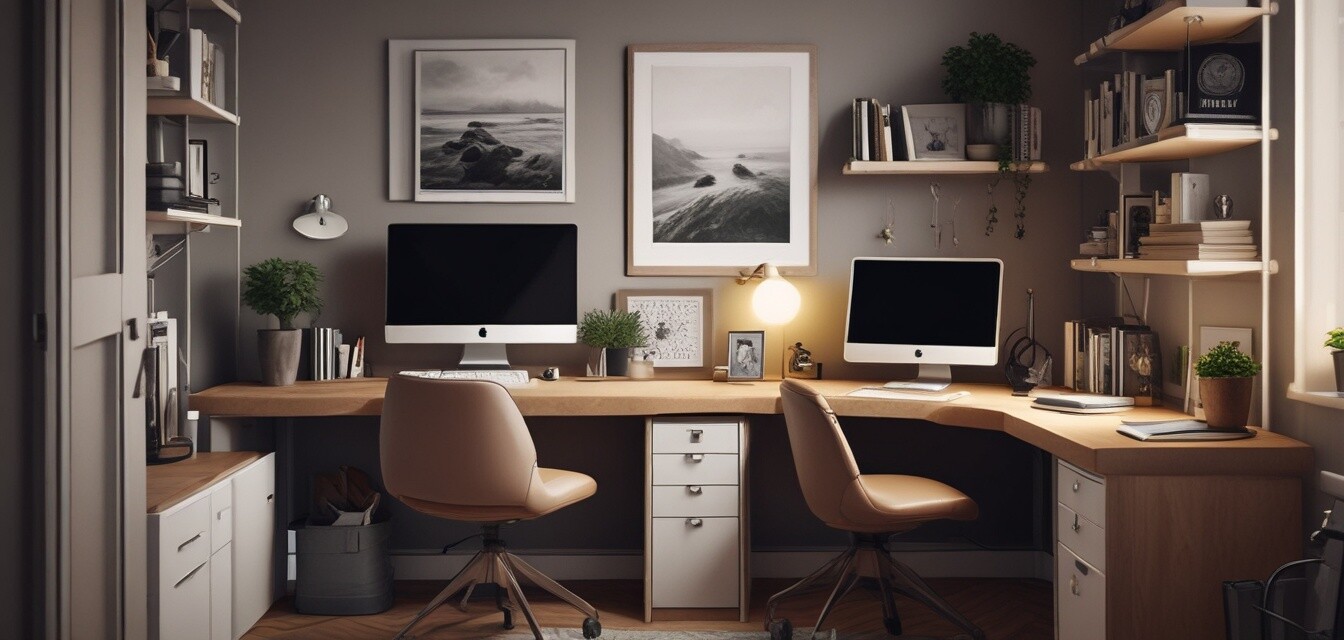
How to Design a Home Office Space for Dual Use
Key Takeaways
- Efficient furniture solutions can maximize space.
- Consider multi-functional decor and accessories.
- Personalize the workspace to inspire creativity.
- Smart organization helps keep your dual-use space functional.
- Planning for comfort is key when transitioning between uses.
Designing a home office space that can effectively double as a guest room or multipurpose area requires careful planning and creativity. With the right approach, you can create a functional workspace that seamlessly transitions into a comfortable sleeping area for guests. Below, we outline essential tips and tricks to help you achieve a perfectly designed dual-use space.
1. Choose the Right Layout
The layout of your home office should prioritize functionality while allowing for a quick transformation when needed. Here are some layout options to consider:
| Layout Option | Description |
|---|---|
| Desk against the wall | Maximizes floor space and allows for more room for a bed or sofa bed. |
| L-shaped desk | Offers more surface area for work while leaving room for other furniture. |
| Corner setup | Utilizes difficult-to-fit areas and makes the room feel more spacious. |
2. Select Multi-functional Furniture
Opt for furniture pieces that serve multiple purposes. This will help you maximize the usability of your space.
- Sofa beds: Provide a place for seating during work hours and easily convert into a sleeping area.
- Folding desks: Can be tucked away when not in use, creating extra space.
- Storage ottomans: Offer seating and hidden storage for office supplies or guest linens.
3. Create Smart Storage Solutions
Keeping your dual-use space organized is vital. Consider these storage ideas:
- Wall-mounted shelves to store books and decorative items.
- Under-bed storage boxes for office supplies or bedding.
- Multi-tiered carts that can be moved as needed.
4. Design for Comfort
Comfort is crucial for both productivity and relaxation. Here are some tips:
- Invest in an ergonomic office chair that can also be comfortable for guests.
- Use soft, layered lighting for a warm atmosphere in the office and a cozy sleeping area.
- Incorporate soft textiles, such as throw pillows and blankets, to enhance comfort.
5. Optimize Aesthetics
Your workspace should also reflect your personal style while being functional. Consider the following:
- Choose a calming color palette that encourages productivity.
- Add decorative touches like artwork or plants to make the space inviting.
- Integrate personal items that showcase your personality without overcrowding the area.
Internal Links for Further Reading
For more ideas on enhancing your home office setup, check out our articles on:
- Buying Guides to Optimize Your Workspace
- Ergonomic Accessories for Comfort
- Setting Up Multi-Monitor Workstations
- Essential Docking Stations for Productivity
- Improving Your Networking Solutions
Conclusion
Designing a home office space that functions well as a guest room is about combining functionality with style. With thoughtful layouts, multi-functional furniture, effective storage solutions, and comfort-focused design, you can create an inviting environment perfect for work and relaxing. Start implementing these tips to transform your space into a dual-use haven.
Pros
- Maximizes space effectively.
- Creates a welcoming environment for guests.
- Enhances productivity through smart design.
- Provides a personal touch to both areas.
Cons
- May require frequent rearranging.
- Can be challenging to find the right furniture.
- Space constraints may limit options.